This article was medically reviewed by Lacy Windham, MD. Lacy Windham, MD, is a Board-Certified Obstetrician & Gynecologist in Cleveland, Tennessee. Dr. Windham attended medical school at the University of Tennessee Health Science Center in Memphis. Her residency was completed at Eastern Virginia Medical School in Norfolk, Virginia. She was the recipient of multiple awards during her residency training, including Most Outstanding Resident in Maternal Fetal Medicine, Most Outstanding Resident in Oncology, Most Outstanding Resident Overall, and Special Award in Minimally Invasive Surgery.
There are 9 references cited in this article, which can be found at the bottom of the page.
This article has been viewed 163,970 times.
Studies show that bacterial vaginosis (BV) is one of the most common types of vaginal infections in women aged 15 to 44.[1] It's caused by an change in the normal bacterial flora of the vagina, and it's easily treatable with antibiotic creams, or pills taken orally. The exact cause of BV is still unknown, but experts note that making some changes in your lifestyle and learning more about the condition may help you avoid developing symptoms in the future.[2]
Steps
Changing Your Lifestyle
-
1Finish your course of medication. It is imperative you complete the prescribed regimen you received from your doctor, if you've sought treatment. Once you've had BV, it can happen again and again. However, if it was diagnosed and you've taken the medications as ordered by your doctor, there's a smaller chance of it coming back.[3]
- If the doctor says take metronidazole or clindamycin for one week (the two often prescribed) then you should take it for the full course prescribed, exactly as directed.
- Don't skip a day or stop taking the medication early.
- Even if the symptoms are already gone in a matter of days, stopping or not completing the prescribed regimen will increase your risk in getting BV again.
-
2Include probiotics in your diet. Probiotics are known to have live and active cultures of microorganisms that help out the normal flora found in the stomach and vagina. They help in repopulating the good bacteria and fight against harmful bacteria. Some researchers have suggested that recurrence of BV may be the result of an inability to regenerate sufficient lactobacilli, the most common strain of normal flora found in the vagina.[4]
- Consuming lactobacilli through food sources, such as yogurt (with the label of “live and active cultures”), soy milk, kefir, sauerkraut, milk, pickles, and olives encourages vaginal flora growth. You should eat 5 ounces of probiotic-containing food daily to help the vagina maintain its acid-base balance.
- Taking probiotics in concentrated forms, such as Ecoflora tablets, has shown good results at helping prevent recurrence of BV.
Advertisement -
3Wear cotton underwear. Avoid wearing tight jeans, panty hose, thongs, or underwear that prevent air circulation near the vaginal area. It is advised to wear cotton and avoid nylon underwear. This is because cotton is a breathable fabric and allows the air to circulate. Nylon traps moisture and heat, making you susceptible to having vaginal infections, including BV.[5]
- Specialists believe that by wearing thongs there is a greater chance of transferring germs from the anus into the vagina and consequently causing BV.
- Wearing loose-fitting, comfortable skirts and pants is part of what may help speed treatment and prevent recurrence of BV.
- Remove any underwear or panties when you sleep to allow for more air circulation.
-
4Wipe from front to back after you use the bathroom. This process can help prevent accumulation of harmful bacteria in the vagina. After urinating, stay seated, and tilt your body forward to allow your hand to reach beneath your buttocks. Wipe the area clean with toilet paper, starting from the front of vagina and ending at the back of the vagina.[6]
- When you have wiped your vaginal area, you may repeat the steps of wiping by starting behind the vagina to wipe the anal area and between your buttocks.
- By cleaning these two areas separately, you'll prevent introducing bacteria from the anus to the vagina.
Knowing What to Avoid
-
1Avoid having sex. Although BV is not a sexually transmitted disease, and the link between sexual activity and BV is not well understood, sex is often associated with women who have new or multiple male or female sexual partners. Although there are few cases of men infecting women with BV, practicing safe sex by using condoms is still important to avoid transmission of various sexual diseases.[7]
- Transmission of BV is more common in women having sexual intercourse with women because vaginal discharges and cervical mucus are exchanged when having sex.
- There is no best way to circumvent this unless you let BV fully recover or you practice total abstinence.
- Using a latex-free condom or dental dam during sex for the first month after completing the antibiotic treatment for BV has been shown to reduce the risks of BV recurring.
- Thoroughly clean any sex toys to prevent spreading the infection or even reinfecting yourself.
-
2Don’t use vaginal douching products. Douching is a procedure that washes the internal vagina using water and vinegar or other douching products sold in drugstores and actually gets rid of the good bacteria. It can cause more infections and may increase the harmful bacteria in your vagina which greatly affects the normal flora causing more odor and increasing your risk for infection. It's an old practice that isn't scientifically viable anymore.[8]
- The vagina has its own self-cleaning behavior. The natural acidity in the vagina helps get rid of harmful bacteria.
- Douching will not affect a vaginal infection, and will likely make it worse.[9]
-
3Stay away from scented soaps, bubble bath, and bath oils, as these may irritate your vagina, or alter the balance of healthy bacteria in your vaginal area. Soap of any sort can alter the natural balance of healthy flora in your vagina. Instead wash your genitals well with water, using your hand.
- It's okay to use mild soap and water to wash the outer region of the vagina.
- Using hot tubs and whirlpools may also have a negative effect on your vaginal health. It's a good idea to limit the use of hot tubs if you're trying to prevent BV from recurring.
-
4Avoid using strong detergents when washing your underwear. Strong detergents contain chemicals that come in direct contact with your vagina causing disruption of normal flora. It changes the acid-base balance in the vagina that will alter the normal pH level. Use milder detergents in washing your underwear and rinse them thoroughly.[10]
- The best laundry soap for underwear will be free of fragrance and softeners.
- If you get hot and sweaty, change out of your stale underwear promptly. Changing your underwear only once a day might not be enough if you live an active lifestyle.
-
5Use unscented tampons or pads. Scented tampons or pads may aggravate the vaginal area. In addition, you should change your tampon often. Keeping a tampon in longer than the recommended number of hours can result in increased risk of bacterial vaginosis.
- Alternate between wearing tampons and pads for the duration of your period.
- Only wear pads and liners if you need to, as they can prevent entrance of air into the genitals making the area warm and moist. This becomes an inviting environment for bacteria to thrive in.
Understanding Bacterial Vaginosis
-
1Learn more about bacterial vaginosis. There is no known cause for BV but certain factors are more common than others in women who are diagnosed with this condition. Most women who have BV are in their child-bearing years, between the ages of 15 – 44. BV is twice as common among African-American women as it is among women of other racial backgrounds. About 1 in 4 of women who are pregnant will develop BV, perhaps due to hormonal changes.
- Women who don't use condoms, but do use intrauterine devices (IUDs), are more likely to get BV than those who use condoms or who are not sexually active.
- BV is not the result of bad hygiene.
- You can get BV without having sex, but many women who are diagnosed with BV report having recent sexual activity with either male or female partners. Sexual activity includes vaginal, oral, and anal sex.
- Men can not be diagnosed with BV.
-
2Know the symptoms of BV. Many women with bacterial vaginosis do not show any symptoms at all. Signs and symptoms of bacterial vaginosis may differ from person to person but is chiefly characterized by:[11]
- Grey, white or yellowish discharge. This is caused by an outgrowth of the bad bacteria that thrives in the vagina, thereby interrupting the normal vaginal flora.
- Foul-smelling discharge. Most commonly described as a “fishy odor” and usually becomes worse after sexual intercourse.
- No signs of soreness or itchiness. BV can sometimes be confused with a yeast infection, also known as thrush. This infection of the vaginal area results in a milky discharge, itchiness and soreness. If your genital area itches, it's unlikely to be BV.
- Pain upon urination. Some women report a painful sensation of burning and sometimes stinging.
-
3Know how it's diagnosed. If you suspect you have BV, you'll need to make a doctor's appointment to confirm and treat it. Your doctor will need to take a sample from your vaginal discharge. This will require you to lie down on your back, with your feet in stirrups, on the exam table. Your doctor will swab the inside of your vagina lightly with a cotton swab in order to gather the necessary sample.[12]
- The acidity of the sample will be measured. If your sample is less acidic than it should be (less than 4.5 pH) you may have bacterial vaginosis.
- Your medical provider may examine the sample under a microscope. If your lactobacilli count is low, but there is an abundance of "clue" cells (cells from the vaginal lining that are coated with bacteria), it's likely you have BV.
Expert Q&A
-
QuestionIf it keeps coming back, is there a surgery or method to prevent it from coming back permanently?
 Mandolin S. Ziadie, MDDr. Ziadie is a board certified Pathologist in South Florida. She specializes in renal, transplant, and pediatric Pathology and has over 12 years of experience. She earned her medical degree from the University of Miami School of Medicine in 2004 and completed her fellowship in Pediatric Pathology at Children’s Medical Center in 2010.
Mandolin S. Ziadie, MDDr. Ziadie is a board certified Pathologist in South Florida. She specializes in renal, transplant, and pediatric Pathology and has over 12 years of experience. She earned her medical degree from the University of Miami School of Medicine in 2004 and completed her fellowship in Pediatric Pathology at Children’s Medical Center in 2010.
Board Certified Pathologist No. The best prevention is avoiding things that allow the bacteria to grow, such as unsafe sex practices, douching, overcleansing, irritating detergents used for clothing, scented feminine care products, etc.
No. The best prevention is avoiding things that allow the bacteria to grow, such as unsafe sex practices, douching, overcleansing, irritating detergents used for clothing, scented feminine care products, etc. -
QuestionWhat is a good soap to use for bv?
 Mandolin S. Ziadie, MDDr. Ziadie is a board certified Pathologist in South Florida. She specializes in renal, transplant, and pediatric Pathology and has over 12 years of experience. She earned her medical degree from the University of Miami School of Medicine in 2004 and completed her fellowship in Pediatric Pathology at Children’s Medical Center in 2010.
Mandolin S. Ziadie, MDDr. Ziadie is a board certified Pathologist in South Florida. She specializes in renal, transplant, and pediatric Pathology and has over 12 years of experience. She earned her medical degree from the University of Miami School of Medicine in 2004 and completed her fellowship in Pediatric Pathology at Children’s Medical Center in 2010.
Board Certified Pathologist First, it's important to understand that soap will not cure BV. You'll need to take the antibiotics that your doctor prescribes. Some soaps can disrupt the environment of your vagina and enable the organism that causes BV to grow, so antibiotics are essential. It is also important to choosea mild, unscented soap, such as an unscented castile soap. Don't use too much soap either. Use warm water with or without a small amount of soap. Do not scrub either, just use your hands or a soft washcloth to gently cleanse your vagina.
First, it's important to understand that soap will not cure BV. You'll need to take the antibiotics that your doctor prescribes. Some soaps can disrupt the environment of your vagina and enable the organism that causes BV to grow, so antibiotics are essential. It is also important to choosea mild, unscented soap, such as an unscented castile soap. Don't use too much soap either. Use warm water with or without a small amount of soap. Do not scrub either, just use your hands or a soft washcloth to gently cleanse your vagina.
Warnings
- BV can cause a significant wound infection if present at the time of a hysterectomy.
- BV is associated with preterm labor in present during pregnancy, so it should be treated.
- When taking metronidazole or clindamycin (the antibiotics typically prescribed to treat BV) you should avoid alcohol, because it can lead to adverse reactions such as nausea, vomiting, skin flushing, tachycardia (increased heart rate above 100 beats per minute when resting), and difficulty breathing.⧼thumbs_response⧽
References
- ↑ https://www.cdc.gov/std/bv/stdfact-bacterial-vaginosis.htm
- ↑ https://my.clevelandclinic.org/health/diseases/3963-bacterial-vaginosis
- ↑ http://www.nhs.uk/conditions/bacterialvaginosis/Pages/Introduction.aspx
- ↑ http://www.medscape.com/viewarticle/714690
- ↑ https://www.nlm.nih.gov/medlineplus/ency/patientinstructions/000687.htm
- ↑ https://www.nlm.nih.gov/medlineplus/ency/patientinstructions/000687.htm
- ↑ http://www.cdc.gov/STD/BV/STDFact-Bacterial-Vaginosis.htm
- ↑ https://www.nlm.nih.gov/medlineplus/ency/patientinstructions/000687.htm
- ↑ https://my.clevelandclinic.org/health/diseases/3963-bacterial-vaginosis
About This Article
Bacterial vaginosis can be unpleasant, but fortunately, you can help prevent it from coming back with a few changes to your daily routine. If you’re taking medication for your bacterial vaginosis, make sure you finish the prescription, even if your symptoms go away, to reduce the chances of it coming back. Try to include probiotic-rich foods in your diet, like milk, soy milk, pickles, and olives. These are important for fighting harmful bacteria. You should also wear cotton underwear, which will help your skin breathe and prevent harmful bacteria from getting trapped. Stick to mild, unscented soaps when you wash downstairs so you don’t strip the healthy bacteria you need to fight infections. For more tips from our Medical co-author, including how to identify bacterial vaginosis, read on.



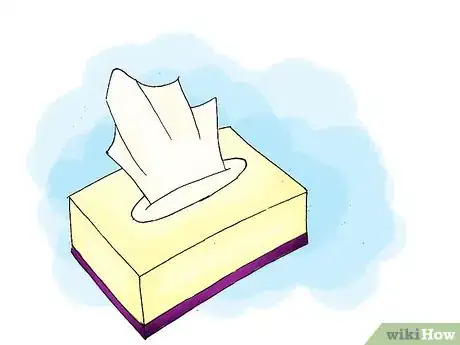
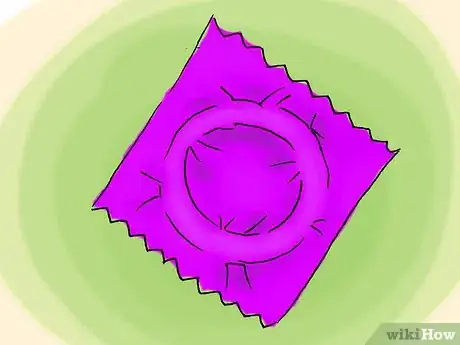
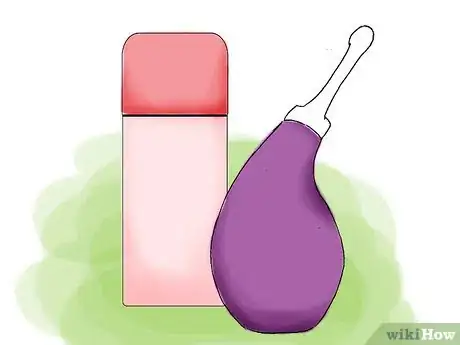
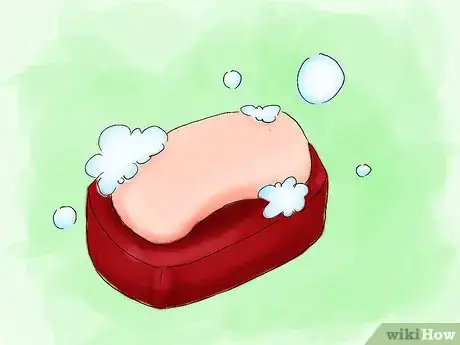
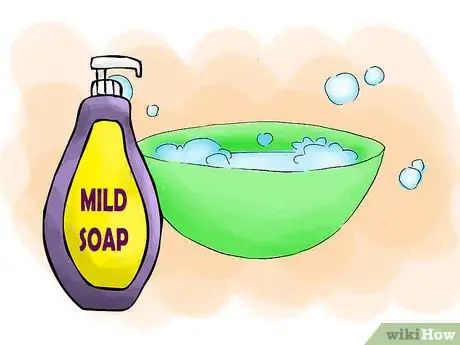
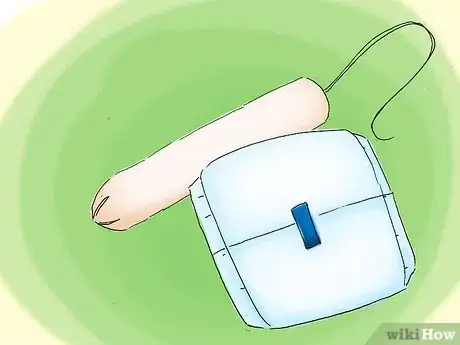




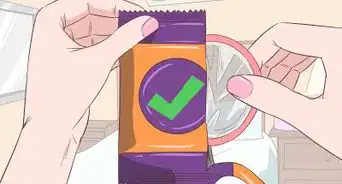

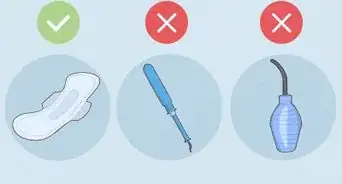





-Step-10-Version-2.webp)












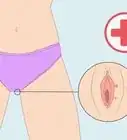
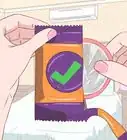

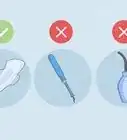



































Medical Disclaimer
The content of this article is not intended to be a substitute for professional medical advice, examination, diagnosis, or treatment. You should always contact your doctor or other qualified healthcare professional before starting, changing, or stopping any kind of health treatment.
Read More...